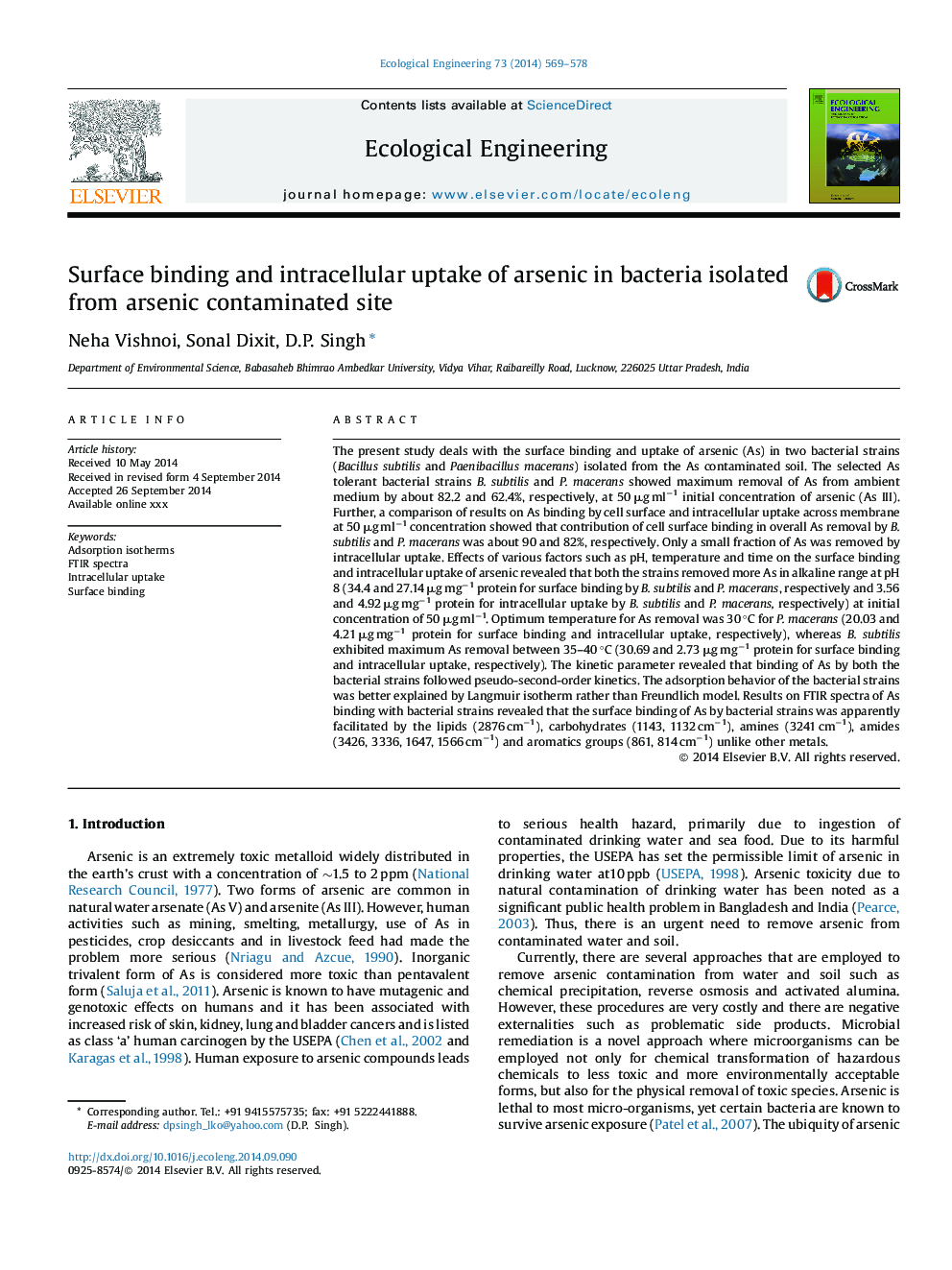| Article ID | Journal | Published Year | Pages | File Type |
|---|---|---|---|---|
| 6302015 | Ecological Engineering | 2014 | 10 Pages |
Abstract
The present study deals with the surface binding and uptake of arsenic (As) in two bacterial strains (Bacillus subtilis and Paenibacillus macerans) isolated from the As contaminated soil. The selected As tolerant bacterial strains B. subtilis and P. macerans showed maximum removal of As from ambient medium by about 82.2 and 62.4%, respectively, at 50 μg mlâ1 initial concentration of arsenic (As III). Further, a comparison of results on As binding by cell surface and intracellular uptake across membrane at 50 μg mlâ1 concentration showed that contribution of cell surface binding in overall As removal by B. subtilis and P. macerans was about 90 and 82%, respectively. Only a small fraction of As was removed by intracellular uptake. Effects of various factors such as pH, temperature and time on the surface binding and intracellular uptake of arsenic revealed that both the strains removed more As in alkaline range at pH 8 (34.4 and 27.14 μg mgâ1 protein for surface binding by B. subtilis and P. macerans, respectively and 3.56 and 4.92 μg mgâ1 protein for intracellular uptake by B. subtilis and P. macerans, respectively) at initial concentration of 50 μg mlâ1. Optimum temperature for As removal was 30 °C for P. macerans (20.03 and 4.21 μg mgâ1 protein for surface binding and intracellular uptake, respectively), whereas B. subtilis exhibited maximum As removal between 35-40 °C (30.69 and 2.73 μg mgâ1 protein for surface binding and intracellular uptake, respectively). The kinetic parameter revealed that binding of As by both the bacterial strains followed pseudo-second-order kinetics. The adsorption behavior of the bacterial strains was better explained by Langmuir isotherm rather than Freundlich model. Results on FTIR spectra of As binding with bacterial strains revealed that the surface binding of As by bacterial strains was apparently facilitated by the lipids (2876 cmâ1), carbohydrates (1143, 1132 cmâ1), amines (3241 cmâ1), amides (3426, 3336, 1647, 1566 cmâ1) and aromatics groups (861, 814 cmâ1) unlike other metals.
Related Topics
Life Sciences
Agricultural and Biological Sciences
Ecology, Evolution, Behavior and Systematics
Authors
Neha Vishnoi, Sonal Dixit, D.P. Singh,
